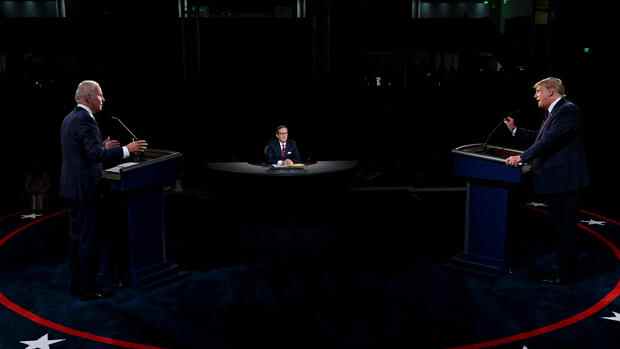new York Evan McMullin could do something extraordinary in Utah. McMullin recently caught up in the race against Republican Mike Lee for his seat in the US Senate. Now he is only a few percentage points behind Lee in polls. The special thing: McMullin is neither a Republican nor a Democrat. He is an independent candidate.
The former Republican is attempting to woo voters with dovish messages. He wants to stop the division in the country and, above all, take care of economic matters – but without having to answer questions from either party. That could go down well with voters: More than half of Americans want a third party, and just 40 percent thought the mainstream parties were doing a good job as of September this year, according to data from polling firm Gallup.
Standing out as an independent candidate against the mainstream parties is a difficult path in the binary US political system. This is mainly due to two characteristics of the US electoral system, explains Mark Siegel, professor of global affairs at New York University. On the one hand, the principle of “first past the post” decides in elections for seats in the Senate or the House of Representatives. The person with the majority of votes for a seat moves into one of the two chambers of Congress. There is no proportional distribution of seats based on the percentage of votes.
In the election of the US president, the electoral system favors the dual party landscape: the party with the most votes usually wins all the electors in a state, who in turn elect the president and vice president. Here, too, it is not the distribution that decides, but the majority principle.
Top jobs of the day
Find the best jobs now and
be notified by email.
The second aspect is voter behavior, Siegel explains. Voters “are reluctant to waste their vote”. So they would prefer to choose a party that has a better chance of winning a majority in a state – and that’s usually the Democrats or the Republicans.
Newly founded parties have a hard time
There are already two independent senators in the current Senate: Bernie Sanders and Angus King. However, both have chosen to belong to the Democratic faction and to adapt their voting behavior. McMullin, on the other hand, has already announced that he does not want to join any faction.
The independent candidate wants to be a senator from Utah.
(Photo: AP)
Away from the independent candidates, efforts are constantly being made in the USA to found new parties. The most popular include the Green Party, the Libertarian Party and the Constitution Party. However, all are only active in a portion of the 50 states.
A fresh start-up is “Forward”. Its founders David Jolly, Christine Todd Whitman and Andrew Yang are optimistic. They captioned their op-ed in the Washington Post in July, in which they introduced their new party: “Most third parties have failed. Why We Won’t Fail”. In the meantime, however, Forward has become quieter, while the election campaign in the USA is in full swing. Journalists and observers attest to the party’s low chances of success.
However, data shows that younger voters in particular are less likely to commit themselves to party affiliation. Party affiliation does not describe joining a party per se, but rather an electoral preference that is officially documented. States require so-called voter registration in order to be able to participate in elections. On this occasion, voters can also choose a side: blue or red.
Midterms – US midterm elections – What is it about?
House of Representatives
In the midterm elections on November 8, the Americans will re-elect all 435 members of the House of Representatives. The term of office of members of parliament is generally limited to two years. So far, the Democrats have 222 seats there, the Republicans 213. Together with the Senate, the House of Representatives forms the Congress.
senate
In the Senate, Americans will only re-elect a third of the 100 seats in the midterms – a total of 35. Of the seats now up for election, 14 have been occupied by Democrats and 21 by Republicans. Currently, Republicans have 50 votes in the Senate, Democrats have 48, and Independents have two. Together with the independents and the vote of the vice president, the Democrats still have the majority.
governorships in the states
In 36 of the 50 states, the governorship will be re-elected on November 8th, i.e. the heads of state and government of the individual states. So far, 20 of the states with gubernatorial elections have been led by Republicans and 16 by Democrats.
Some of the most hotly contested states that could shift the balance of power in Washington include Arizona, Florida, Georgia, Kansas, Nevada, New Hampshire, North Carolina, Ohio, Pennsylvania and Wisconsin.
There is also the option of registering as “independent” – something that younger people in particular are becoming increasingly aware of. More than half of millennials are registered as independent voters, and the trend is rising. The proportion of baby boomers this year was 33 percent.
A two-party system not only divides politics, but also the people in the country. Polls by the polling institute Pew Research found that supporters of one party are not only critical of the policies of the other party, but also critical of the people who belong to that party.
For example, 62 percent of Republicans think Americans who belong to the Democratic Party are lazy, a growing trend. In 2016 it was only 46 percent. 83 percent of Democrats consider supporters of the Republican Party narrow-minded.
More: New US party “Forward” – Andrew Yang is campaigning for votes with Democrats and Republicans
